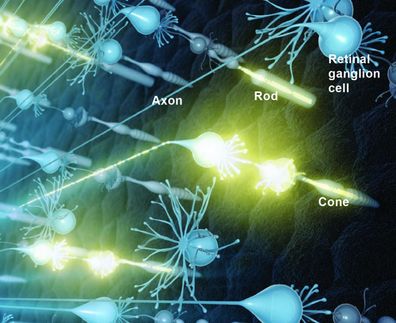Research 'A' team to fast track Bionic Eye, Australian consortium announced
Advertisement
Tens of thousands of people with severe vision loss are set to benefit after the announcement of a landmark partnership of world-leading Australian research institutes. Bionic Vision Australia will pursue the development of the most technologically advanced bionic eye to improve the sight of people with degenerative or inherited retinal disease.
Bionic Vision Australia's members include the University of Melbourne, the University of New South Wales, the Bionic Ear Institute, Centre for Eye Research Australia and the Victoria Research Laboratory of NICTA.
Bionic Vision Australia Chairman, Professor Emeritus David Penington A.C, said the partnership "brings together Australia's international experts in medical bionics, covering the many disciplines required to develop a safe and technologically advanced device able to restore functional vision."
"Our team is well placed to undertake the critical research required to deliver an advanced Bionic Eye, which would deliver improved quality of life for patients suffering from common causes of severe loss of vision and blindness", he said.
A bionic eye will assist in restoring patient mobility, independence and quality of life by effectively replacing the function of damaged light-sensing cells in the eye. While the clarity and definition of vision will not be equal to normal sight, the device will allow patients to move around, detect large objects and, in time, read text and recognise faces and emotions.
Bionic Vision Australia has submitted a detailed plan and funding request to the Australian Government to enable it to undertake the required research and early clinical testing. The New South Wales and Victoria governments have both provided support to the partnership to enable the development of the detailed plan.
The proposal follows an 18-month feasibility study undertaken by members of the consortium and heightened public interest in the bionic eye, most notably at the recent Australia 2020 Summit where it was flagged as a "big idea" worthy of consideration for Australia to pursue.
Bionic Vision Australia proposes to have its first advanced prototype ready for the first human implant by early 2012 that delivers significant benefits to patients with severe mobility and light perception difficulties. This device is the result of research undertaken over a 10-year period by the Australian Vision Prosthesis Group at the University of New South Wales.
An enhanced second prototype developed at the Victoria Research Laboratory of NICTA could be available for the first human implant by late 2013 and would provide further improved quality of life for patients where image perception is the primary consideration.
"This is an exciting opportunity for Australia to reinforce its leadership in medical bionics, first demonstrated with the development in Melbourne of the bionic ear in the 1970's", said Professor Anthony Burkitt, Research Director of Bionic Vision Australia and Chair of the Department of Electrical and Electronic Engineering at the University of Melbourne.






















































